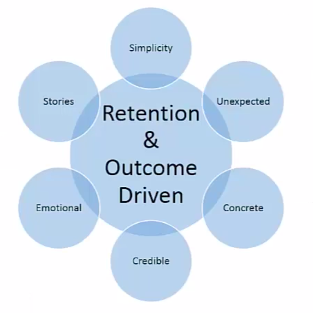The Curse of Knowledge 
In 1990, psychologist Elizabeth Newton played a game with students at Stanford University. Two students sat at a desk. One student tapped the rhythm to the song “Happy Birthday To You” on the desk between them. The other student was tasked with the song.
Put yourself in this situation. What would you imagine the success rate of the students who had to guess the song would be? 1 out of 10? 5 out of 10?
The results were startling.
💡 Only 1 in 40 students guessed the song correctly.💡
Here’s the bigger problem - half of the students who were the ones doing the tapping thought the other students would guess correctly. ![]()
Because the tappers knew the song, and they had the song playing in their head, they expected much more people to understand what they were trying to communicate.
Psychologists call this “the curse of knowledge.” This is one of many cognitive biases that occurs where one individual, when communicating with others, unknowingly assumes that the others have the required background to understand them.
Most of the time we communicate our ideas as if we are the audience. It’s easy to forget that our audience doesn’t always share our knowledge. This puts communication at risk of being either confusing or boring.
Examples of The Curse of Knowledge
 Ever read a scientific paper? Almost no one can understand them, because hardly anyone outside of that scientists discipline shares their level of knowledge or the language they use to convey their ideas. They are loaded with scientific jargon, bone dry, and punishingly boring.
Ever read a scientific paper? Almost no one can understand them, because hardly anyone outside of that scientists discipline shares their level of knowledge or the language they use to convey their ideas. They are loaded with scientific jargon, bone dry, and punishingly boring.
 Perhaps more relatable: ever provide what you felt was a precise set of instructions for someone to follow, and yet they didn’t? Or maybe you spent hours working on a presentation you felt was compelling and interesting, yet everyone you presented it to appeared bored and disengaged?
Perhaps more relatable: ever provide what you felt was a precise set of instructions for someone to follow, and yet they didn’t? Or maybe you spent hours working on a presentation you felt was compelling and interesting, yet everyone you presented it to appeared bored and disengaged? Now what about your website? What about the copy you’re producing and your content strategy? Are you speaking to your audience? Or are you making the content about what you know and you understand? A little audience research can go a long way in understanding what your market is truly interested in, the language they use to communicate, and how you can position your strategy to provide them the most relevant information.
Now what about your website? What about the copy you’re producing and your content strategy? Are you speaking to your audience? Or are you making the content about what you know and you understand? A little audience research can go a long way in understanding what your market is truly interested in, the language they use to communicate, and how you can position your strategy to provide them the most relevant information.
SUCCES
Author’s Dan Heath and Chip Heath developed a list of techniques to overcome the curse of knowledge and make our ideas stick. The world is flooded with ideas, this method helps ensure some of them stand out in the minds of your audience.
Sticky ideas are:
- Interesting
- Actionable
- Measurable
Furthermore, they are:
- Understandable
- Memorable
- Effective in changing thoughts or behavior

Let’s look at the anatomy of this acronym and define what makes up each component:
Simplicity 
- Breaking down each idea into it’s essential core.
- It’s the headline of your slide and summary of what you want the audience to understand.
- Use concepts your audience can understand and relate to.
Unexpected 
- The first requirement of effective communication is getting attention. The second is keeping it.
- Something unexpected gets attention.
- The US Department of Transportation has a commercial that at first seems like an advertisement for a new minivan. The unexpected event reveals this is actually a commercial for seatbelt safety and the risks not buckling up can have on your family.
Concrete 
- Allow your audience to relate to your ideas with their senses. Show, don’t tell.
- Don’t keep ideas or statistics as an abstraction. Convey them in a way that compels connection.
- Concreteness enables coordination by making targets clear. Even experts need clarity.
- Consider these two mission statements:
- “We will provide the best customer service in the industry.”
- “We will answer every customer service phone call within 3-rings. We will resolve all support calls within 7-minutes. We will improve our service scores from 60% satisfaction to 75% satisfaction over the next 12-months.”
- Which one sounds more concrete?
- Consider these two mission statements:
Credible 
- Speak to the trustworthiness of your idea.
- Data, research, statistics - these are tools to support your ideas and opinions.
- A person’s credentials do not determine credibility, only evidence does.
- This is incredibly important. Perceived credibility based solely on an individual’s credentials is also referred to as the Appeal to Authority Fallacy.
- The Appeal to Authority argument states that someone’s job title, experience, or credentials in general are used as evidence for an argument's conclusion.
- It is a fallacy due to the fact that just because someone is an expert in their field, it does not mean the things they say are true or backed up with evidence. For example, if a medical doctor advises you drink gasoline, it does not make the consumption of gasoline advisable simply because they are a medical doctor.
Emotional 
- No one takes action unless they truly care.
- Therefore, your job is to make them care. Appeal to the self-interest of those you’re presenting to. What do they care about? Why do they care about that? Understanding the answers to these questions will provide emotional context to ensure your message makes its intended impact.
- Telling college students not to drink and drive is one thing. Putting a twisted wreck of a car on campus that proves the dangers of it is another thing. It’s the same message (“drinking and driving is dangerous”) conveyed in entirely different ways.
Stories 
- Stories are as old as language itself.
- They’re used to convey meaning and, regardless of how numerate your audience is, can color in the context of your data and present it in a meaningful way.
- Cognitive psychologist Jerome Bruner suggests we are 22 times more likely to remember a fact when it has been wrapped in a story.
- Or consider that our brains are more active DURING SLEEP than they are during a lecture


- Eric Mazur of Harvard measured the brain activity of students.
- The standard classroom architecture mimics spaces from ancient Greece, but these spaces were for performances, not learning.
- Having someone read you dry, bland notes off a projector (sound familiar?) is enough to practically turn your brain off.
- We must engage our audience, provide a compelling story to our discussion, and generate interest in those we’re speaking with to avoid a boring experience with our ideas.
Now it’s time to make your ideas stick.
As you’re preparing for your next presentation, strategy deck, or important discussion, consider utilizing some of the principles of SUCCES to increase the odds your message sticks. Would you like to work with Seer Interactive to help with this effort? We’d love to hear from you! Contact us to learn more about what an engagement with our team would be like.


